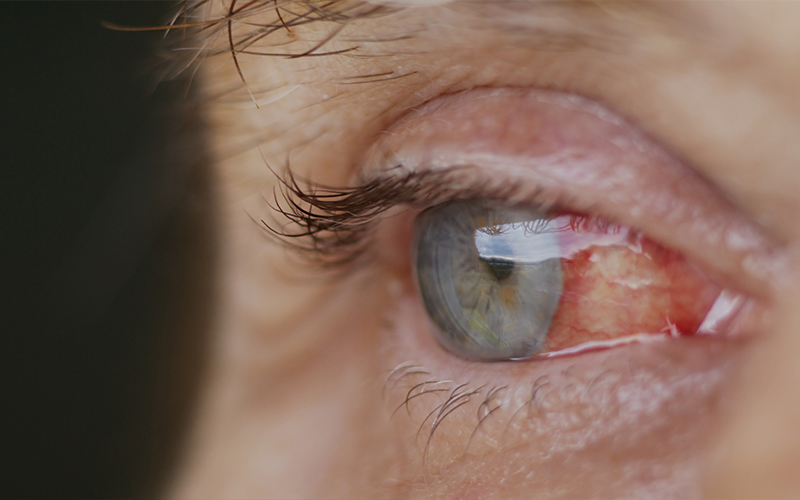A cataract is the clouding of the natural lenses in the eye, right behind the pupil and the iris.
Cataracts are the most common cause for loss of vision in those who are older than 40 years old. It is the main cause of blindness throughout the entire world. According to Prevent Blindness America (also known as PBA), there are more cases of cataracts diagnosed worldwide than diabetic retinopathy, glaucoma and macular generation combined.
Kinds of cataracts include the following:
- Cortical cataracts: These are known by their white opacities that are wedge like. They begin in the lenses periphery and work towards the center of the lens in a spoke like movement. The cortical cataract occurs in the cortex of the lens which surrounds the central area of the nucleus.
- Nuclear cataracts: These form deep within the lenses central zone. They are typically connected to natural aging.
- Subcapsular cataracts: These form at the back of the lenses. Those who take large doses of steroid medications and those with diabetes are at a higher risk for developing this kind of cataract.

Sign and Symptoms
A cataract begins small and has very little effect (if any) on your sight. You might notice that your vision has become a bit blurry as if you are looking through a piece of clouded glass. It may make the sun light seem overly bright or glaring. Or, you might notice that when you drive after dark that the headlights of other vehicles cause more glare then they used to. Colours may not seem as vivid as they used to either.
The symptoms that you experience and how soon they'll begin will be different depending on the type of cataract you have.
During the early development of a nuclear cataract you may experience an improvement in your vision that is known as a temporary second sight. The bad news is that this second sight is short lived and will go away as the cataract starts to get worse. On the other hand, a cataract that is subcapsular might not show any signs until it's well-formed.
If you suspect that you have a cataract you should visit an optometrist as soon as possible for diagnosis and treatment.
Common Causes
The eye lens works a lot like the lens of a camera. It focuses light upon the retina so there is clear vision produced. In addition, it adjusts the focus of the eye by letting it see things clear no matter how close or far that they are.
The lens is composed mostly of protein and water. The protein is precisely arranged so that it keeps things clear and allows light to pass through the lens without a problem.
However, as we get older, some of protein can stick together and begin to cloud small areas of the lens; AKA a cataract. Over time it can get bigger and more clouded, in turn challenging our visual abilities.
No one knows exactly why the lens goes through these changes as we get older. However, research across the globe has identified certain factors that can cause the formation of cataracts. Aside from advanced age, risk factors include the following:
- Diabetes
- Family history/genetics
- High Myopia
- Hormone replacement therapy
- Hypertension
- Long time use of corticosteroid medications
- Medications used to lower cholesterol
- Obesity
- Over consumption of alcohol
- Past eye injury
- Past eye surgery
- Smoking
- Ultraviolet rays from the sun
An idea developing popularity is that cataracts are caused by the oxidative changes in the eyes lens. There are nutrition studies that support this, showing vegetables and fruits that are antioxidant rich may help in the prevention of certain kinds of cataracts.
Preventing Cataracts
Although there is controversy surrounding the topic of cataract prevention, there are several studies on that suggest specific nutritional supplements and nutrients can actually reduce the chances of developing cataracts.
One large study that researched female medical professionals for a period of ten years found that higher intake of vitamin E, xeaxanthin and lutein (both carotenoids) from supplements and foods were connected to a significant decrease in cataract risk. Good sources of vitamin E include spinach, seeds and almonds. Good sources of xeaxanthin and lutein include leafy vegetables such as kale and spinach.
It has been shown in other studies that vitamin C and omega 3 fatty acids can lower the risk of cataract development as well. Another thing you can do to lower the risk of cataract development is wear sunglasses that block out 100% of the sun when outdoors.
Treatment of Cataracts
When cataract symptoms begin to appear, you might be able to improve your eye sight for a short time by using new eyeglasses, contacts or other visual aid assistance items. When they become a significant visual obstruction then you should consider surgery. Many people think low vision is part of aging that is unavoidable, but the surgery for cataracts is a common procedure that helps many patients regain their vision.
Cataract surgery is usually quite successful when it comes to the restoration of vision. New IOL's are being created ongoingly to make the surgery less complicated for doctors and to make the lens of greater benefit to patients. Presbyopia correcting IOLs can help you to see in not just one, but at all distances. Another type blocks out blue light and UV rays and this blocks out sun damage to the retinas.
Find a local optometrist near you.
Our local optometrists as well as their facilities are equipped with state-of-the-art ophthalmic technology and years of experience to provide the most effective treatment.
Find an Optometrist